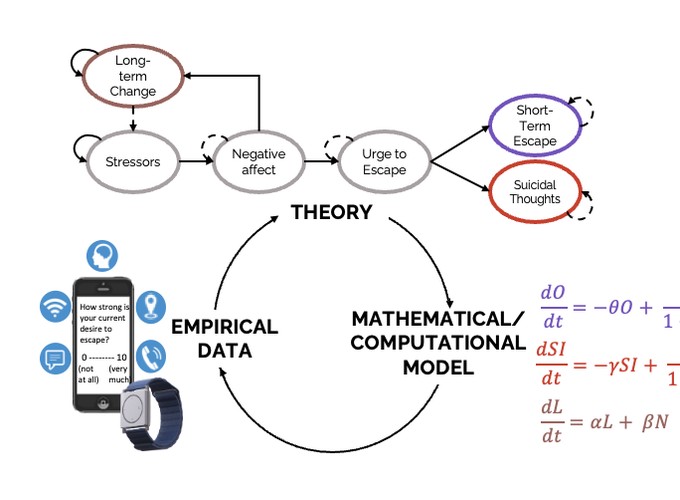To date, theories of psychopathology have been instantiated verbally. Unfortuantely, verbal theories are underspecified due to the inherent imprecision of natural language. As an example, consider the verbal theory “hopelessness leads to suicidal thoughts”. While this is indeed a component of many existing suicide theories – and a statement that many psychopathology researchers (myself included) would agree with – the verbal nature of this theory leaves many details unspecified. For instance, is the theorized relationship between hopelessness and suicidal thoughts within-person, between-person, or both? What shape does this relationship take (e.g., does change in hopelessness cause a linear or nonlinear change in suicidal thoughts over time)? And importantly, if someone is experiencing a requisite level of hopelessness, when should suicidal thoughts be expected to emerge based on the theory (the same day, the next day, the following week)? None of these details are typically specified in a verbal theory, which makes it difficult to understand precisely what the theory is proposing to explain or predict – and ultimately how it may be used to guide interventions.
Formalizing a theory can overcome many of these limitations because mathematical models demand specificity and precision. In addition, formal theories can be used to simulate artificial data, which can be compared to empirical data to iteratively develop, evaluate, and refine theories over time. In my newest and ongoing work, supported by an NIMH F31 award, I aim to formalize theories of psychopathology as mathematical and computational models, from the perspective of complex dynamical systems.
